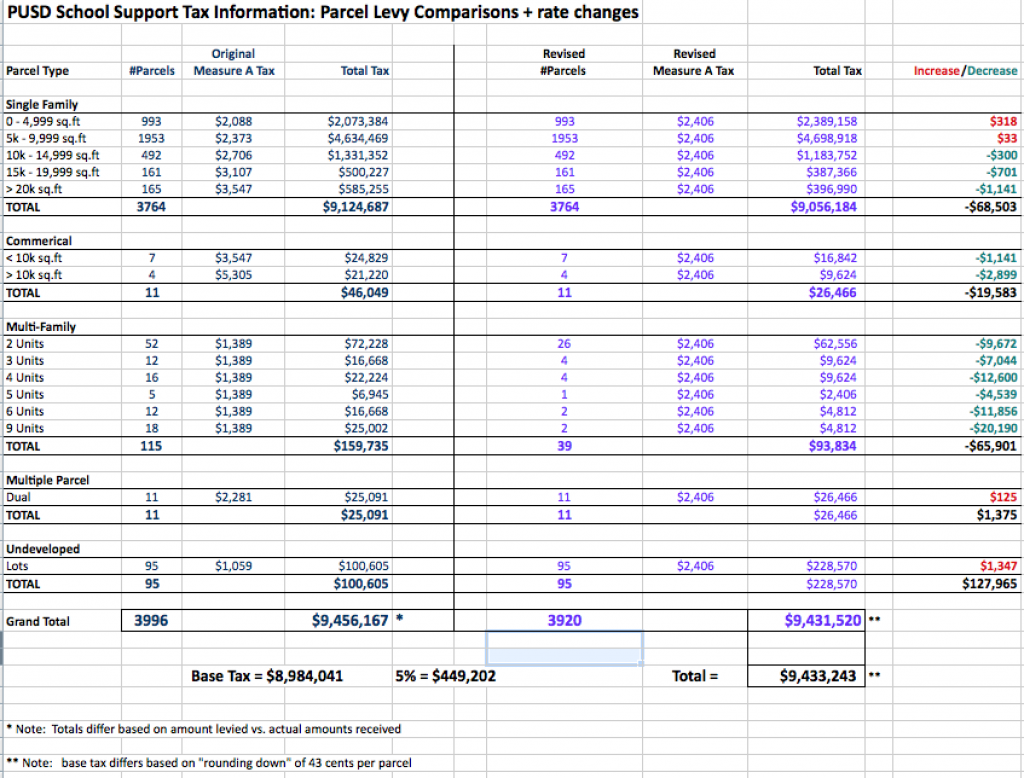Feb 4 2013
How did the Piedmont Unified School District Board determine the Measure A first year amount of $2,406 per parcel?
First, $9.5 million, stipulated by School Board members as the necessary funds, was the approximate amount of revenue generated by the current Measure B 2012-13 parcel tax and adding an additional 5% increase for 2013-14, which the School Board planned to levy for 2013-14. (December 11, 2012 PUSD minutes)
Second, the School Board divided the number of parcels (3,920) into approximately $9.5 million to determine the $2,406 tax per parcel tax proposed in Measure A. Below are the number of Piedmont parcels in each category as defined by the School District under the current Measure B tax, which is based on parcel size.
3,764 – Residential
11 – Commercial
39 – Multi-family
11 – Multiple parcel
95 – undeveloped
Total: 3,920
Under the proposed Measure A flat tax, approximately, 78 % of residential property owners will find their tax increased, while approximately 22 % will find their taxes reduced compared to current rates.
Total number of residential parcels = 3,764
993 – Parcels under 4,999 sq. ft. tax will increase
1,953 – Parcels between 5,000 sq. ft. and 9,999 sq. ft. tax will increase
818 – Parcels 10,000 sq. ft. or over tax will decrease
2,946 – Total residential parcels taxed more under Measure A
818 – Total residential parcels taxed less under Measure A
50 – Commercial/multi-family parcels taxed less under A
95 – Undeveloped parcels taxed more under Measure A
Multi-family and commercial parcels (50) will
Below are the per parcel projected 8-year Measure A payments. These figures include a 2% increase per year for each parcel. By the end of the tax 8-year term the total for each parcel would amount to $20, 651.
2013 $2,406
2014 plus 2% $2,454
2015 plus 2% $2,503
2016 plus 2% $2,553
2017 plus 2% $2,604
2018 plus 2% $2,656
2019 plus 2% $2,710
2020 plus 2% $2,764
Potential Measure A total 8 year assessment per parcel
= $20,651
Additional tax rate information is available on the Patch.



